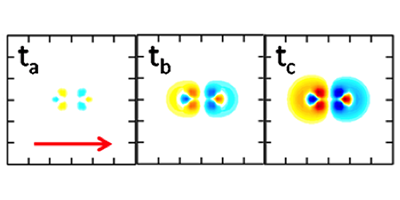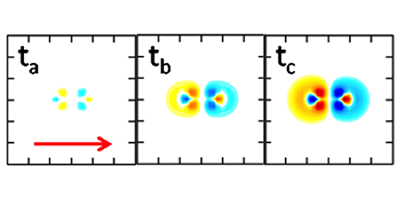Watching a Quick Shift
Photosynthesis and laser surgery are among the things that would be better understood and controlled if we could take snapshots of what happens when photons initially strike molecules. Attosecond laser pulses have enabled studies of the first steps after a molecule is ionized, but until now it has not been possible to get a peek at what happens earlier, while the molecule is still neutral and intact. In a paper in Physical Review Letters, Christian Neidel at the Max Born Institute, Germany, and colleagues report their success in tracking the changes in electron density during the first attoseconds after the photoexcitation of small molecules.
Neidel et al. first use a femtosecond infrared laser pulse, just strong enough to cause an imbalance in electron density in a molecule (such as , , or ) This doesn’t ionize the molecule but creates an electric dipole that changes in time. Then the researchers ionize the neutral molecule with an attosecond ultraviolet pulse. Since the amount of ionization detected depends on the instantaneous dipole, the team can map out the time evolution of the electron density changes by changing the delay between the first and second pulses.
The authors show with density-functional calculations that they can extract, with attosecond precision, fundamental molecular parameters (such as the polarizability tensor) from these data. Their goal now is to apply these methods to important targets such as large biomolecules. It should be possible, for example, to watch migration of charge from one part of these molecules to another, a process vital to many biological functions. – David Voss





